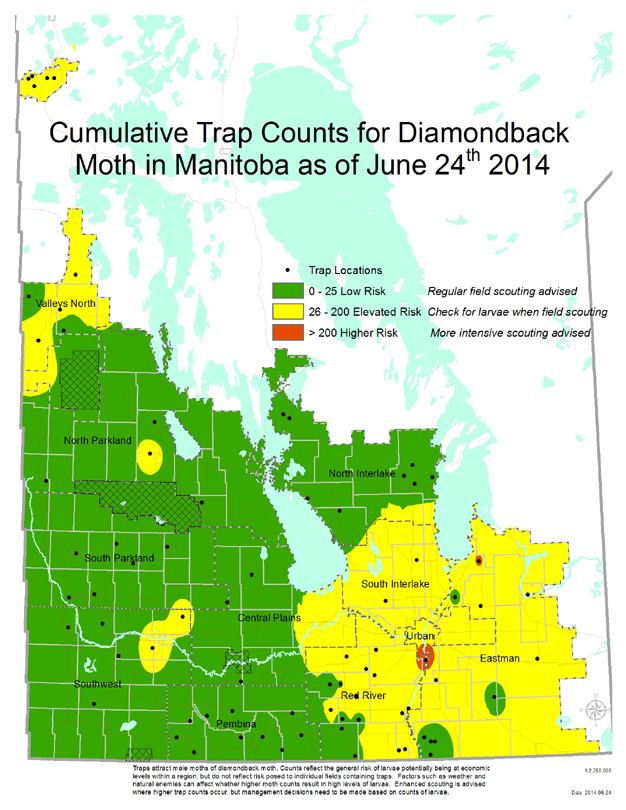To view PDF files, you must have a copy of the Adobe Acrobat Reader which is available as a free download:
Manitoba Diamondback Moth Monitoring Program - 2014
Diamondback moth does not overwinter well in the Canadian prairie provinces, but large numbers can potentially blow in. If conditions are favorable for their survival and reproduction when they arrive, and if natural enemies do not limit population establishment, populations can increase.
Pheromone-baited traps, which attract the male moths, are established for a 6-8 week period from late-April until about mid-June to detect the arrival of populations of diamondback moth early in the season. The cumulative counts from the traps, which is presented in the map below, can not predict what levels of larvae will be, but can be used to determine areas of the province where increased monitoring of fields will be necessary.
Summary
Trap counts remained low until late-May. During the week of May 25-31 higher numbers began to appear in some traps. During that week, for the first time this growing season there are a number of wind trajectories crossing the prairies that originated over southwest USA and Mexico.
Highest cumulative trap counts over the trapping period were:
| Location | Count |
|---|---|
| St. Adolphe | 287 |
| Stead | 207 |
| Morris 2 | 182 |
| Elm Creek | 136 |
| Morris 1 | 132 |
| The Pas | 105 |
| Teulon | 100 |
The first reports of larvae of diamondback moth were on June 14th. Growers and agronomists should now be looking for larvae of diamondback moth while scouting canola fields, with more intensive scouting recommended in areas with higher trap counts.


